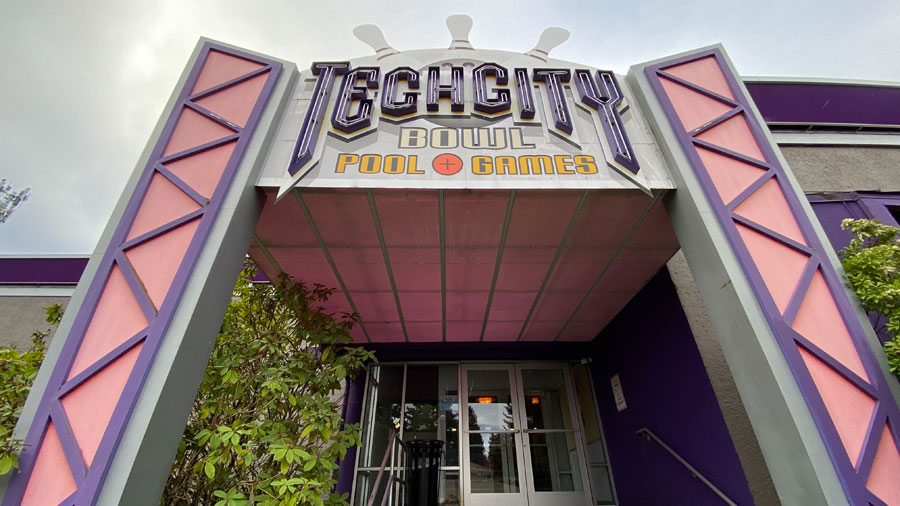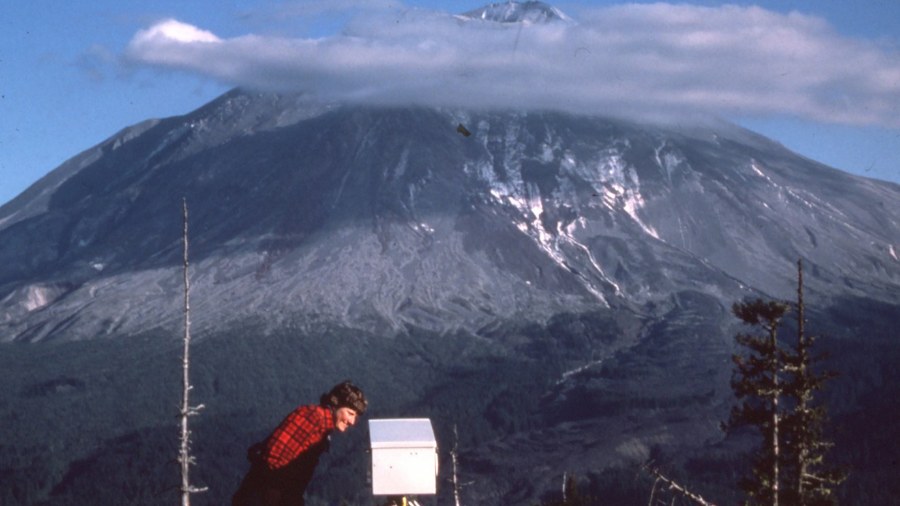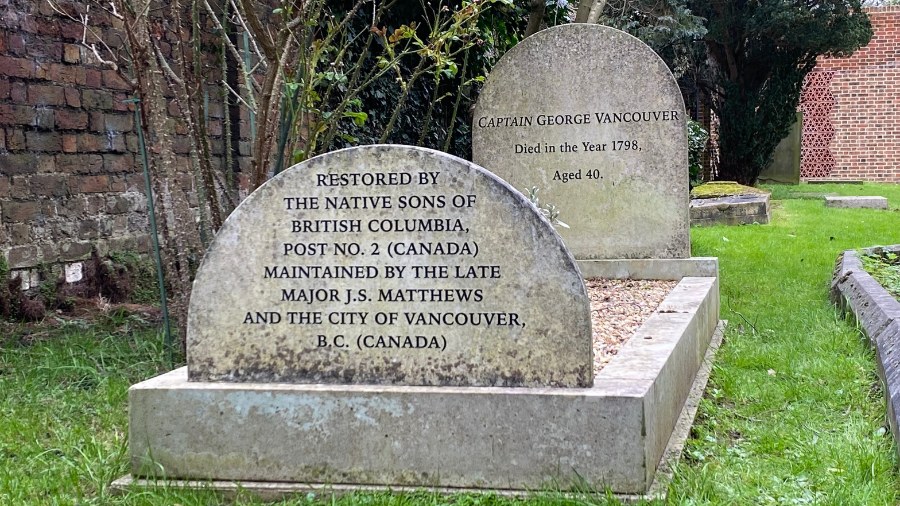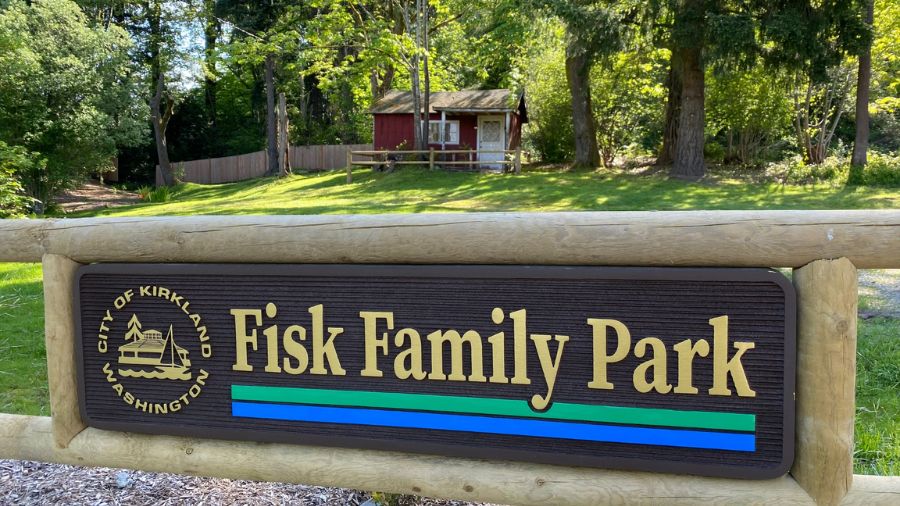Memorial Stadium landmark nomination missing key history and context
Jun 28, 2023, 11:28 AM | Updated: 1:47 pm

Under the current proposal, Memorial Stadium would be torn down and a new facility built. (Feliks Banel/KIRO Newsradio)
(Feliks Banel/KIRO Newsradio)
Seattle Public Schools have officially submitted a landmark nomination to the City of Seattle Landmarks Preservation Board for Seattle High School Memorial Stadium at Seattle Center.
While much of the background on the design and construction of the 1947 structure is included in the nomination, a surprising amount of history and context is nowhere to be found.
Earlier this month, Seattle Public Schools announced it will partner with some of the same private entities that rehabbed Key Arena to create Climate Pledge Arena in a project to demolish and replace Memorial Stadium. Unlike most of Seattle Center, the school district owns and operates the stadium and has since it was dedicated in 1947 in memory of Seattle alums who died in World War II.
More from Feliks Banel: When Bob Hope broadcast live from Fort Lewis
The Department of Neighborhoods issued a press release Tuesday setting Aug. 16, 2023, as the date the Seattle Landmarks Preservation Board will consider a nomination of Memorial Stadium as a city landmark. The press release included a link to a 128-page nomination prepared by consultants who were hired by the school district.
Presenting a Landmarks nomination
Why submit a Landmarks nomination if the building owner is aiming to demolish it?
In an email, Sam Read from the Department of Neighborhoods said the process is “a bit complicated” and “wonky.” He believes the school district “preemptively submitted a landmark nomination,” assuming they would have to in the future.
According to Sam Read, this is because the Department of Neighborhoods has an agreement with the Department of Construction and Inspections that impacts projects like this. Because Memorial Stadium is more than 50 years old and might be eligible for landmark designation, the school district would “most likely” be required to submit a landmark nomination as part of their request for a demolition permit from the Department of Construction and Inspections.
Seattle Public Schools sees this process mostly the same way as the City of Seattle – if you don’t split hairs over the difference between “required” and “necessary.”
In an email Tuesday, district spokesperson Tina Christiansen wrote, “[s]ubmitting a landmarks nomination is not required” for the project, but it’s “an expected part of our standard practice and — given the age of the stadium — necessary to undertake any redevelopment of the site or any element within the site.”
In that Department of Neighborhoods press release, it says that a “landmark nomination provides a physical description of the building, object, or site, and information on its history, current and historic photos, site plans, maps, drawings, and more.”
The nomination shared yesterday was written by a pair of private consultants under contract to the school district – Susan Boyle and David Peterson – and the nomination they prepared does include much of what is mentioned in the press release. There are photos and drawings, and information about how and why the stadium was built, along with basic information about its history.
The information in the nomination is what the appointed members of the City of Seattle’s Landmark Preservation Board will review when they consider whether or not Memorial Stadium should be designated a city landmark. There will be public comment during their meeting and written comments submitted in advance, but Landmark Board members rely on what the landmark nomination includes.
Seattle Public Schools likely wouldn’t say so in as many words, but their hope is most certainly that the stadium will not be designated a landmark so that the demolition and redevelopment can move forward. If it is designated, that could ultimately – but not necessarily – shut down the entire project. At the very least, a landmark designation might delay the project and increase its cost.
With demolition as the goal, a cynical person might think that a landmark nomination prepared on behalf of the entity that wants to do the demolishing might not be prepared in such a way as to highlight all the reasons why a particular structure should be designated as a landmark. The City of Seattle’s process – where the owner intent on demolition pays for the preparation of this landmark nomination – seems like it might have the potential for misuse.
According to the Memorial Stadium landmark nomination prepared by Susan Boyle and David Peterson, to be designated a City of Seattle landmark, the “City’s Preservation Ordinance (SMC 25.12.350) requires a property to be more than 25 years old, and ‘have significant character, interest or value, as part of the development, heritage, or cultural characteristics of the City, State, or Nation.’ It must have integrity or the ability to convey its significance.”
Further, Boyle and Peterson write a “property must meet one or more of six criteria” in order to be designated by the City of Seattle Landmarks Preservation Board as a city landmark.
More on Memorial Stadium: Memorial Stadium’s success as ‘living memorial’ may have doomed it
These criteria, according to Boyle and Peterson, are: Criterion A, it is the location of, or is associated in a significant way with, a historic event with a significant effect upon the community, City, state, or nation. Criterion B, is associated in a significant way with the life of a person important in the history of the City, state, or nation. Criterion C, it is associated in a significant way with a significant aspect of the cultural, political, or economic heritage of the community, City, state, or nation. Criterion D, it embodies the distinctive visible characteristics of an architectural style, period, or a method of construction. Criterion E, it is an outstanding work of a designer or builder. Criterion F, because of its prominence of spatial location, contrasts of siting, age, or scale, it is an easily identifiable visual feature of its neighborhood or the City and contributes to the distinctive quality or identity of such neighborhood or the City.
Based on a fairly cursory examination of the nomination prepared by Boyle and Peterson, it appears that they provide an adequate amount of information and details which would allow members of the City of Seattle Landmark Preservation Board to judge Memorial Stadium on Criterion D, Criterion E, and Criterion F.
Where the nomination appears not to provide adequate information in order to judge Memorial Stadium’s eligibility for landmark designation is for Criterion A, Criterion B, and Criterion C.
Those three categories could reasonably be combined into a single category covering history and context, as well as association with historically significant people and events.
For example, here are some of the significant events associated with Seattle High School Memorial Stadium that are not mentioned in the landmark nomination Boyle and Peterson prepared on behalf of Seattle Public Schools.
Seattle TV was born there
Memorial Stadium was the site of the first live television broadcast north of Los Angeles and west of the Twin Cities. KRSC – which became KING – inaugurated TV in Seattle on November 25, 1948, with a live broadcast from Memorial Stadium. In addition to the viewers watching in Seattle, an entrepreneur in Astoria, Oregon, set up gear in advance in order to tune in to the broadcast from Seattle and share it with his friends and neighbors via what’s considered the first or second cable TV system in the United States.
Cold War history at Memorial Stadium
The nomination mentions that opening and closing ceremonies for the 1962 Seattle World’s Fair were held at Memorial Stadium. What’s not mentioned are any of the artists, elected officials, and civic leaders who took part in the ceremonies. Also not mentioned is any of the Cold War contexts.
President Kennedy took part in the opening ceremonies on April 21, 1962, by phone, officially opening the fair with a gold-encrusted telegraph key. President Kennedy was scheduled to be in Seattle in person for the closing ceremonies on October 21, 1962; he had to cancel his appearance because of the Cuban Missile Crisis, though organizers were told only that Kennedy had a head cold.
The presence of Soviet missiles in Cuba would be revealed by Kennedy in a live prime-time TV address on October 22, 1962 – the day after the fair ended and a day after he had been forced to miss his scheduled appearance at Memorial Stadium.
Other World’s Fair Events
There’s no mention of other notable events during the 1962 World’s Fair, including the Tommy Bartlett waterskiing show sponsored by local boat manufacturer Pacific Mariner and the huge musical extravaganza known as the “Canadian Tattoo.”
Turkey Day Games
There’s only cursory mention of high school football at Memorial Stadium. Missing are some of the great stories, including what historian Bill Kossen told KIRO Newsradio in 2017.
“Memorial Stadium in Seattle simply was the center of the universe of high school football in the Pacific Northwest,” Kossen said. “This was the place to go as a player, [the] place to go as a fan. There were a lot of other nice stadiums around the area, and there was the famous Stadium Bowl in Tacoma, but there was nothing like Memorial Stadium,” Kossen said.
Kossen says that Memorial Stadium was best known for the “Turkey Day Game” held there each year from 1947 until the early 1970s.
“People would plan their Thanksgivings around the championship football game that would be played on Thanksgiving Day in Memorial Stadium,” he said. But the biggest excitement at Memorial Stadium came in the post-Turkey Day Game era, says Kossen.
“Some of the greatest games in history were played down here,” Kossen said. “1975, the four-overtime thriller between Garfield and Blanchet for the Metro League Championship, with [future Seattle City Councilmember] Bruce Harrell starting on the Garfield side, he was a linebacker and the team captain,” Kossen said. “And famous [future Husky and Seahawk] Joe Steele on Blanchet.”
The final score, after an incredible four overtimes? Blanchet 42, Garfield 35.
“It was considered by many as the greatest high school football game of the century in Washington state,” said Kossen. “Right down here in little old Memorial Stadium.”
In addition, as KIRO Newsradio reported in 2017, beyond high school football, Memorial Stadium hosted earlier iterations of the Sounders in the 1970s and the 1990s and [was] home to the Seattle Reign.
Memorial Stadium as a music venue
The Grateful Dead played Memorial Stadium multiple times in the early 1990s, and other national acts appeared there over the years, including REM and Elvis Costello. Perhaps more importantly, during Bumbershoot as well as on other occasions, local bands that defined pop music worldwide in the 1990s played at Memorial Stadium, including Soundgarden, Pearl Jam and the Presidents of the United States of America.
Other events from the past
Memorial Stadium also served for many years as the finish line for the Seattle Marathon and was the site of protest rallies during the historic WTO. Ministerial meetings in Seattle in 1999.
Bottom line if a member of the City of Seattle Landmarks Preservation Board read only the landmark nomination prepared by Boyle and Peterson at the behest of Seattle Public Schools, they wouldn’t learn any of this history and context.
As suggested by a Seattle Public Schools spokesperson, KIRO Newsradio reached out to Susan Boyle and David Peterson Tuesday by email and phone to ask about these omissions. Susan Boyle responded via email very early Wednesday and wrote, “we must refer any questions from individuals or the media to the [Seattle Public Schools] project manager Tingyu Wang.”
Reached by phone Wednesday morning, Wang referred KIRO Newsradio back to Seattle Public Schools communications staff, who early Wednesday afternoon provided a written statement attributed to Beverly Redmond, the school district’s interim chief of staff:
“Seattle Public Schools [SPS] is confident in the quality of the report as submitted. However, we stand ready to supply additional information to the Landmarks Board if they make a request. SPS also values the voices and perspective of our community. We understand the wide array of events and memories attached to Memorial Stadium. The stadium is a valuable, endearing, long-standing, publicly used and student-centered venue in the heart of Seattle’s center. We encourage the community to share thoughts with the Landmarks Board as part of its two-step nomination/designation process. It allows additional information to be supplied through public comment.”
According to the Department of Neighborhoods, written comments may be submitted in advance of the August 16 meeting of the Landmarks Preservation Board as long as they are received no later than 3:30 p.m. on August 15, 2023. Written comments can be submitted via email to: erin.doherty@seattle.gov; or via US Mail to: Seattle Landmarks Preservation Board, Seattle Department of Neighborhoods, PO Box 94649, Seattle, WA 98124-4649.
The public meeting where the Landmarks Preservation Board will determine Memorial Stadium’s eligibility as a landmark will be held Wednesday, August 16, 2023, at 3:30 p.m. in the Boards & Commissions Room (L2-80) of Seattle City Hall, located at 600 4th Avenue (and remote participation options will be available).
KIRO Newsradio also reached out for comment on Memorial Stadium’s landmark eligibility to Washington State Architectural Historian Michael Houser of the Washington State Department of Archaeology and Historic Preservation.
“I have not read the proposed local nomination,” Houser wrote in an email. “But I can tell you that we formally declared the stadium eligible for the National Register back in 2003.”
You can hear Feliks every Wednesday and Friday morning on Seattle’s Morning News with Dave Ross and Colleen O’Brien, read more from him here, and subscribe to The Resident Historian Podcast here. If you have a story idea, please email Feliks here.













